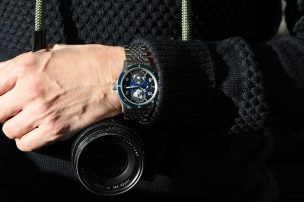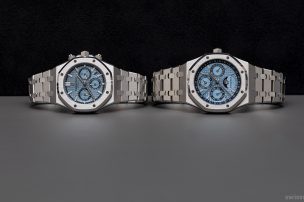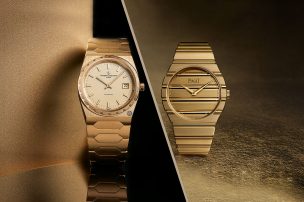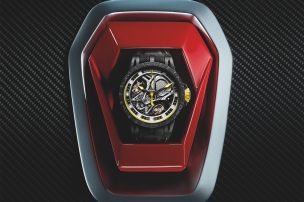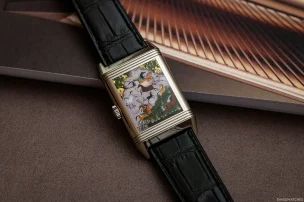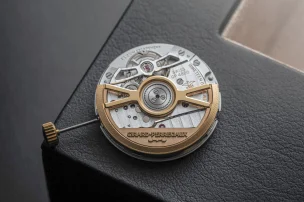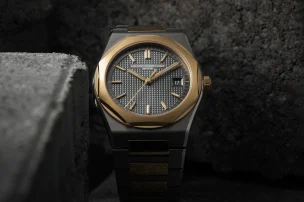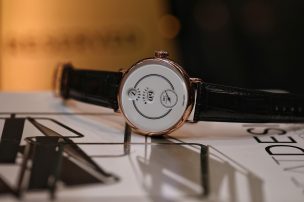
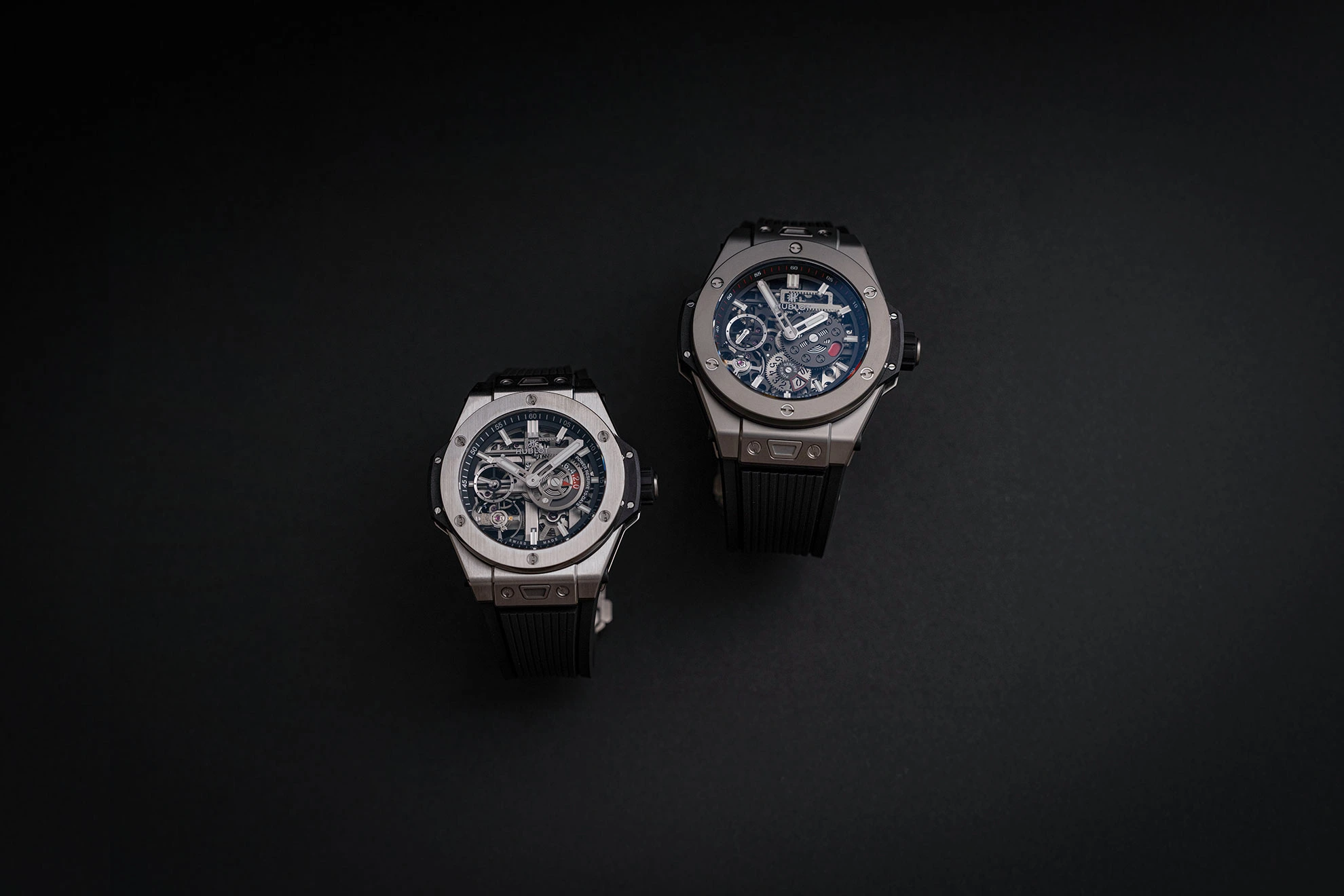
The New Hublot Big Bang MECA-10 42 mm: Evolution of a Revolution
At the beginning of 2025, Hublot revised its striking Big Bang MECA-10, a timepiece renowned for its ten-day power reserve and unconventional power reserve display. The primary focus of this update was a reduction in size, from a bold 45 mm to a more restrained 42 mm in diameter. Achieving this required the development of a new movement, bringing both functional enhancements and refined aesthetics.
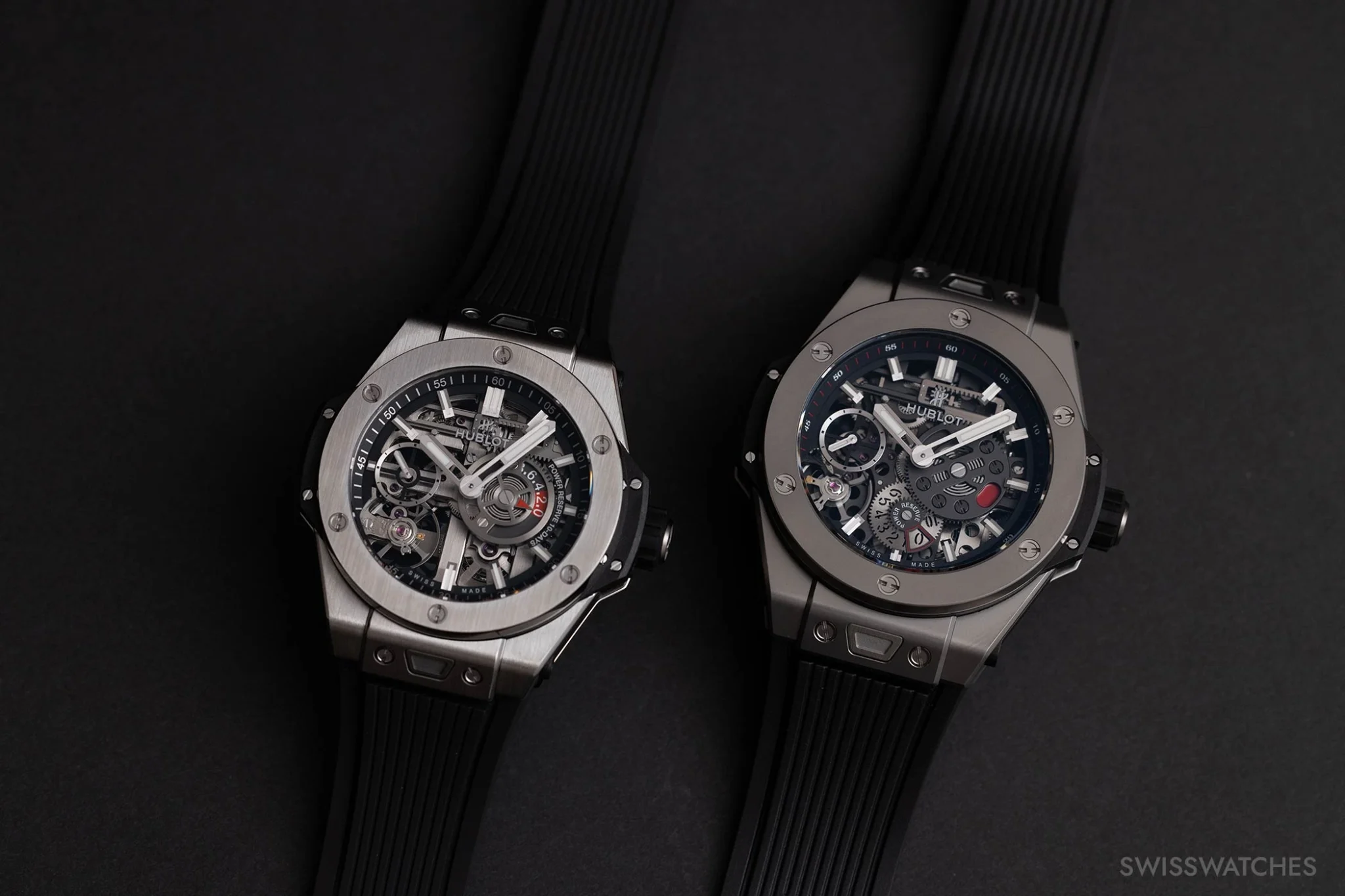
Hublot MECA-10 in 42 mm (left) and in 45 mm (right)
MECA-10 – A radical design
When Hublot introduced the first Big Bang MECA-10 in 2016, it marked a revolution in mechanical movement design. The innovation extended beyond the impressive ten-day power reserve of its hand-wound movement. More striking was the modern construction of the skeletonised in-house calibre HUB 1201, which caused a stir in the watchmaking world. In keeping with the avant-garde design of the complex Big Bang case, the technically inspired movement featured an unconventional horizontally moving rack, a balance wheel positioned on the front, and bridge perforations reminiscent of metal construction kits. At the time, such a bold departure from traditional movement layouts was rare. Richard Mille had already found success with contemporary movement designs, but in an entirely different price category. The Big Bang MECA-10 was even awarded the prestigious Red Dot Design Award: Best of the Best in 2017.
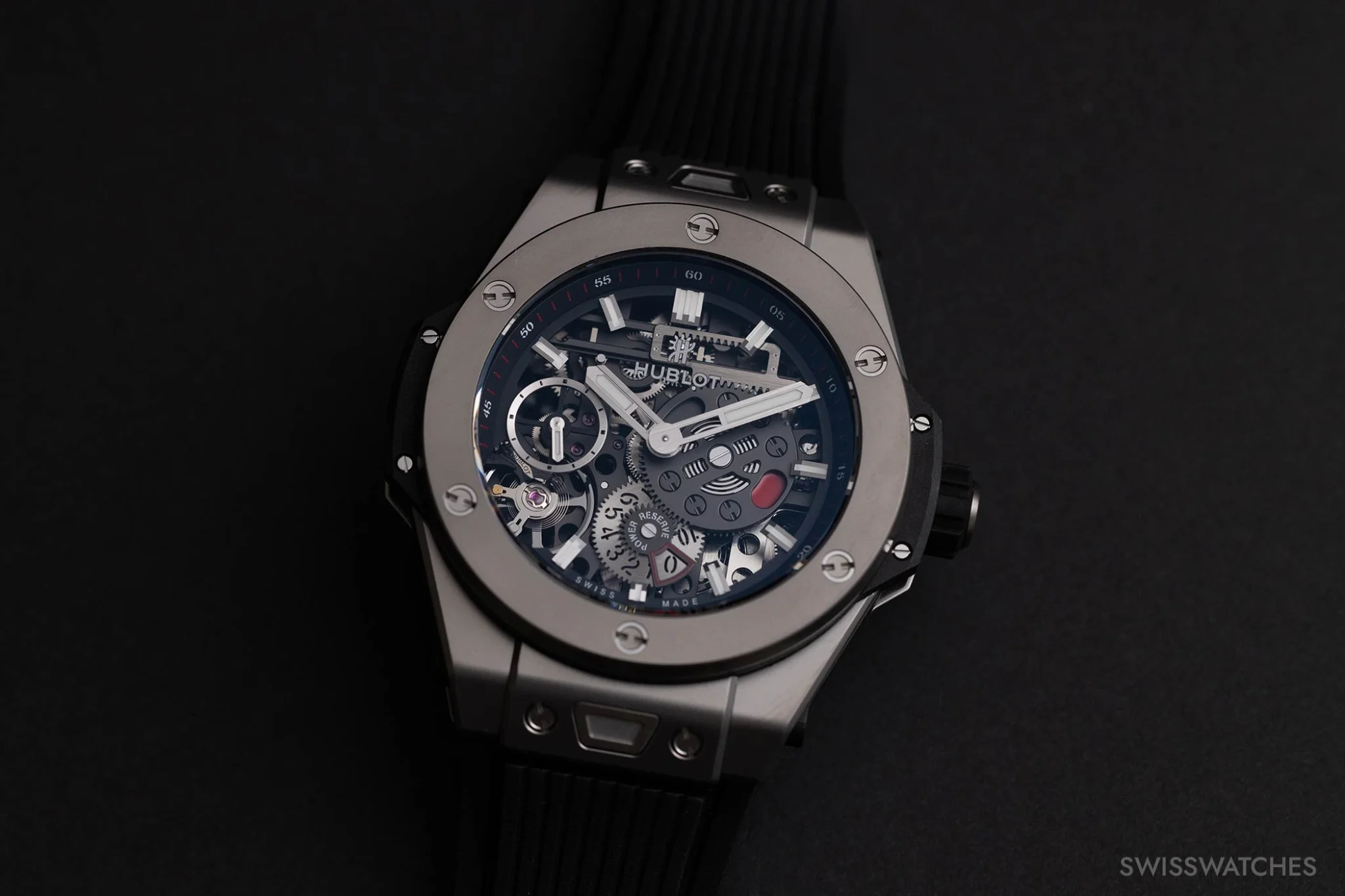
Hublot MECA-10 45 mm
From the outset, Hublot designed the HUB 1201 calibre for a watch without a conventional dial. One of its distinctive features is that the function of the mainplate is taken over by an external ring, which is almost invisible once assembled. This design choice allowed for an exceptionally open-worked movement with numerous cut-outs. Additionally, the balance wheel was relocated from the back to the front, where it now oscillates – a feat to be admired by the wearer. The bridges are skeletonised, finished in matte grey, and sandblasted for a technical, modern aesthetic.
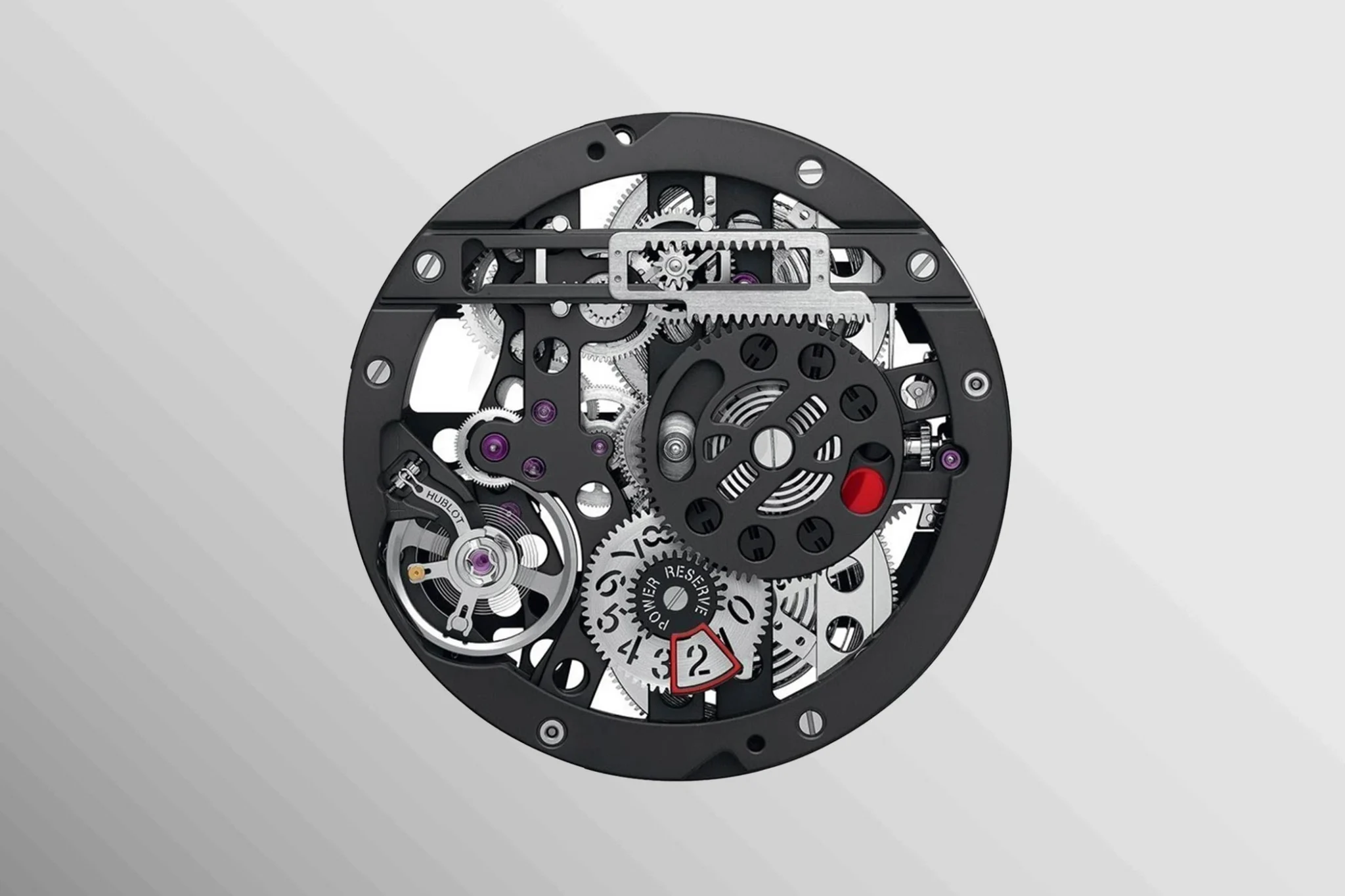
View onto the power reserve with the rack that moves along rails
Another defining design element is the unconventional power reserve display. In the original MECA-10 with the HUB 1201 calibre, it consists of three visible components: a rack that moves along rails in the upper section of the display; a large circular indicator below it, featuring a red marking that serves as a reminder to wind the watch when the power reserve reaches three days; and a circular display at six o’clock, which uses a red aperture and stencil-like numerals engraved into a gear to indicate the remaining power reserve in days.
How does the power reserve indicator work?
With over 30 components, the power reserve indicator of the MECA-10 is among the most intricate in the world of watchmaking. Yet the underlying mechanism is relatively straightforward. On the reverse side, the two large open mainspring barrels are clearly visible. They are arranged in parallel, meaning both engage with a central wheel that drives the gear train. As a result, both barrels unwind simultaneously, allowing the power reserve indicator to rely solely on the upper barrel.
In principle, a mainspring barrel functions by being wound via the ratchet wheel on its arbour, while the toothed base on the opposite side gradually releases the stored energy. Any power reserve indicator works by measuring the difference between these two wheels: the greatest difference signifies that the watch is fully wound, with maximum power reserve. When there is no difference, the watch has fully run down.

Hublot MECA-10 in 42 mm (left) and in 45 mm (right)
Mechanically, this task is managed – as is customary – by a compact, enclosed planetary differential with a satellite wheel and internal gearing, visible at 11 o’clock. In a conventional setup, a simple hand would be mounted here to indicate the remaining power reserve on a scale. However, in the MECA-10, the complexity begins at this very point: a reduction gear at 12 o’clock moves the visible rack back and forth. The teeth on its lower side drive the wheel at 3 o’clock, which in turn moves the wheel with the red aperture at 6 o’clock.
What remains hidden from view is a second, similarly constructed sliding component beneath the rack. Unlike the upper rack, its lower side features teeth facing upwards, allowing the pinion visible at 12 o’clock to move it in the opposite direction to the upper rack. This lower rack then drives the lower disc of the indicator at 3 o’clock, which in turn moves the stencil-numbered wheel at 6 o’clock.

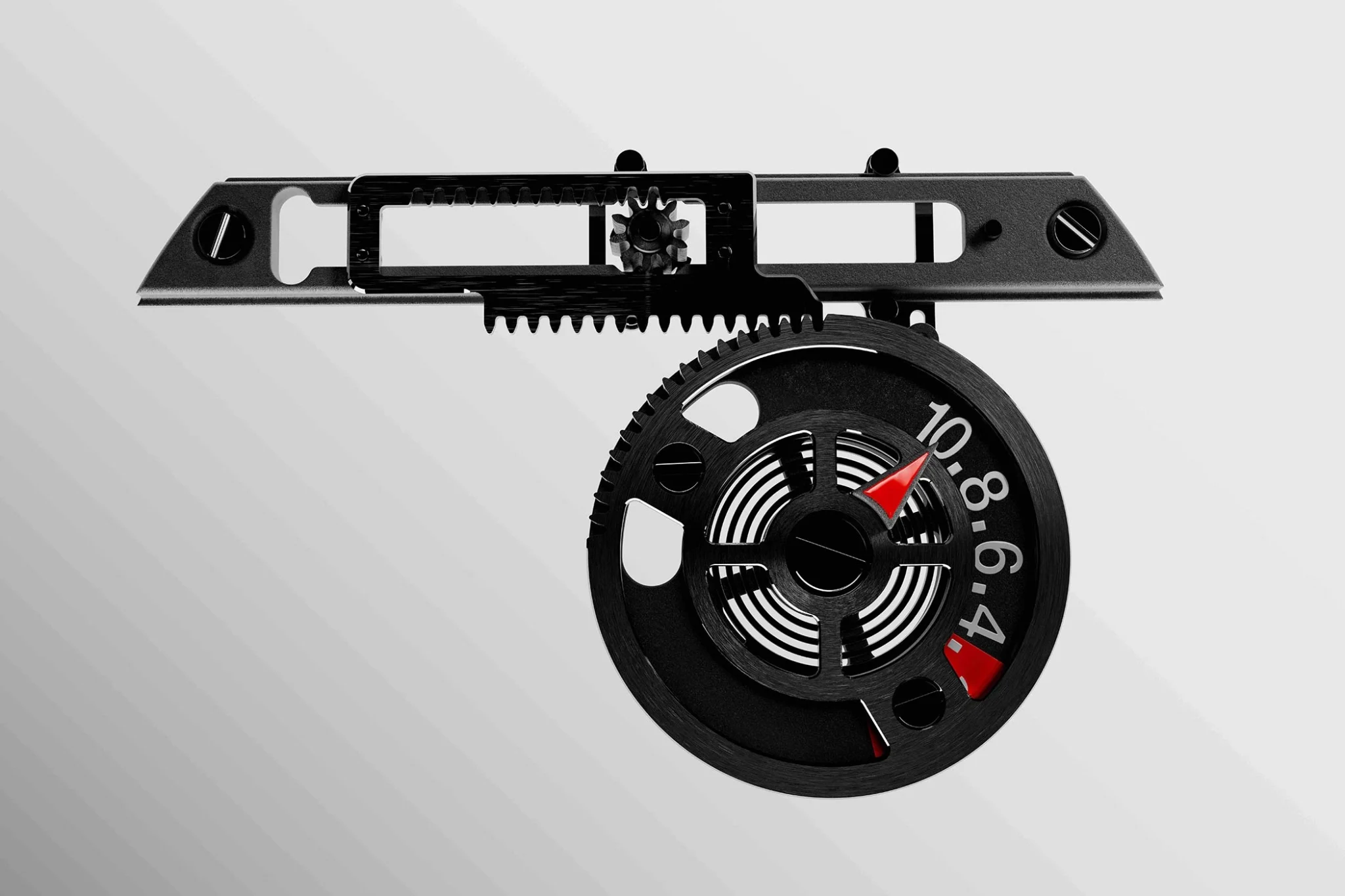
In both indicators, the upper and lower sections move in opposite directions, both during winding and as the movement gradually unwinds. The visible spring in the display at 3 o’clock connects the upper and lower wheels, keeping them under tension and eliminating any play caused by the backlash between the numerous gears.
What is new in the MECA-10?
To accommodate the reduced case diameter, the new HUB 1205 calibre also had to be downsized: instead of 35.2 mm, it now measures just 33.4 mm. This required several technical adjustments. The most noticeable change is the removal of the second power reserve indicator at six o’clock due to space constraints. The display at three o’clock now takes on an additional role: alongside its red reminder function, it also indicates the remaining days of power reserve. This is achieved through a red triangle pointing to the printed day markers.

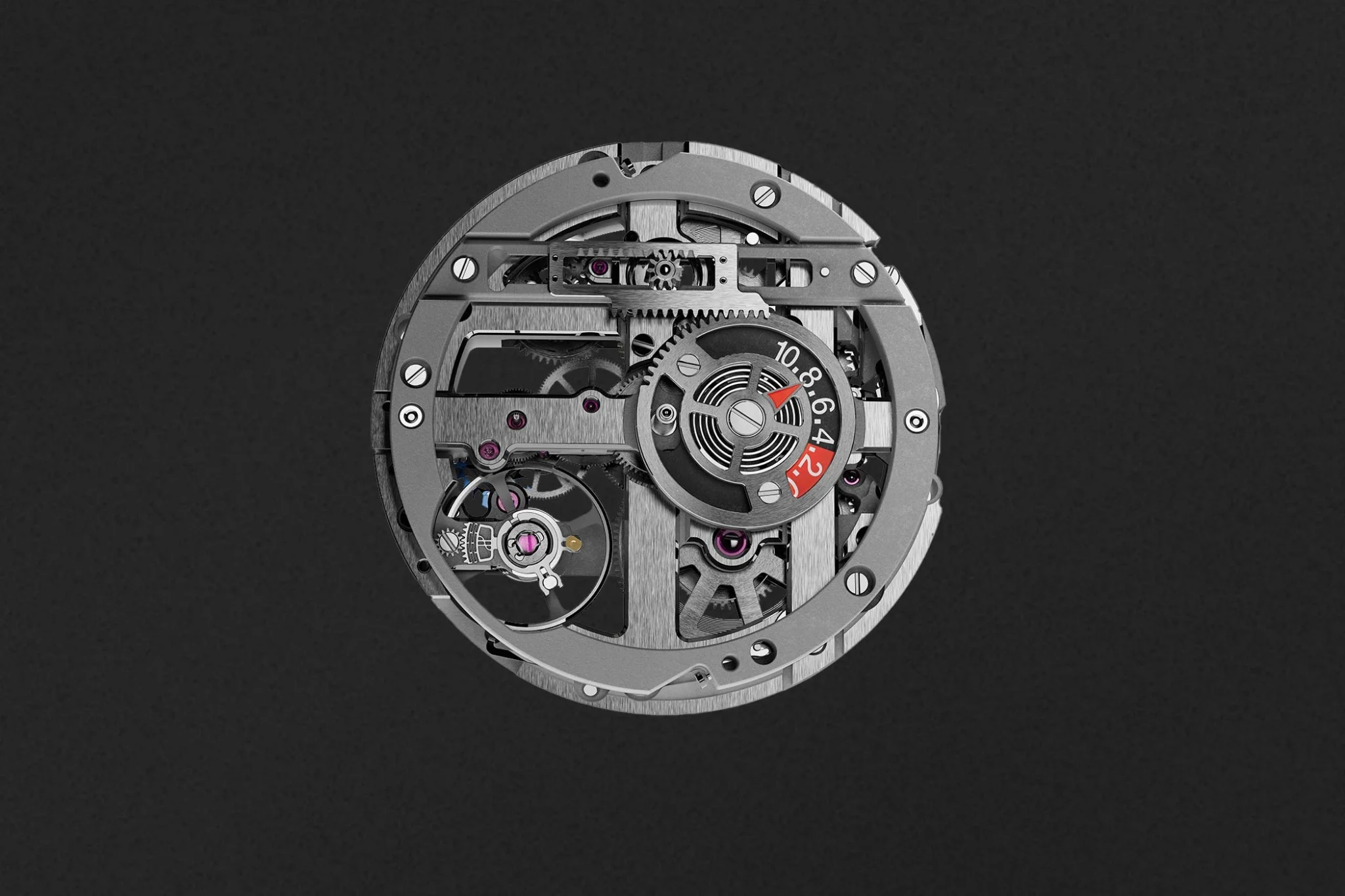
The new calibre HUB 1205 (right)
Another new feature is the addition of a hacking seconds mechanism integrated into the movement. When the crown is pulled, the balance wheel is halted, allowing the time to be set with precision to the second.
There is also a modification to the fine adjustment system. Previously, watchmakers could regulate the movement by shifting the regulator arm along a horizontal axis using a knurled screw. However, this system was barely visible, as it was positioned beneath the small seconds scale. In the new movement, the bridge has been repositioned and the regulator now ends in a toothed circular section that can be fine-adjusted with a screw – an improvement that makes the fine adjustment much more visible.
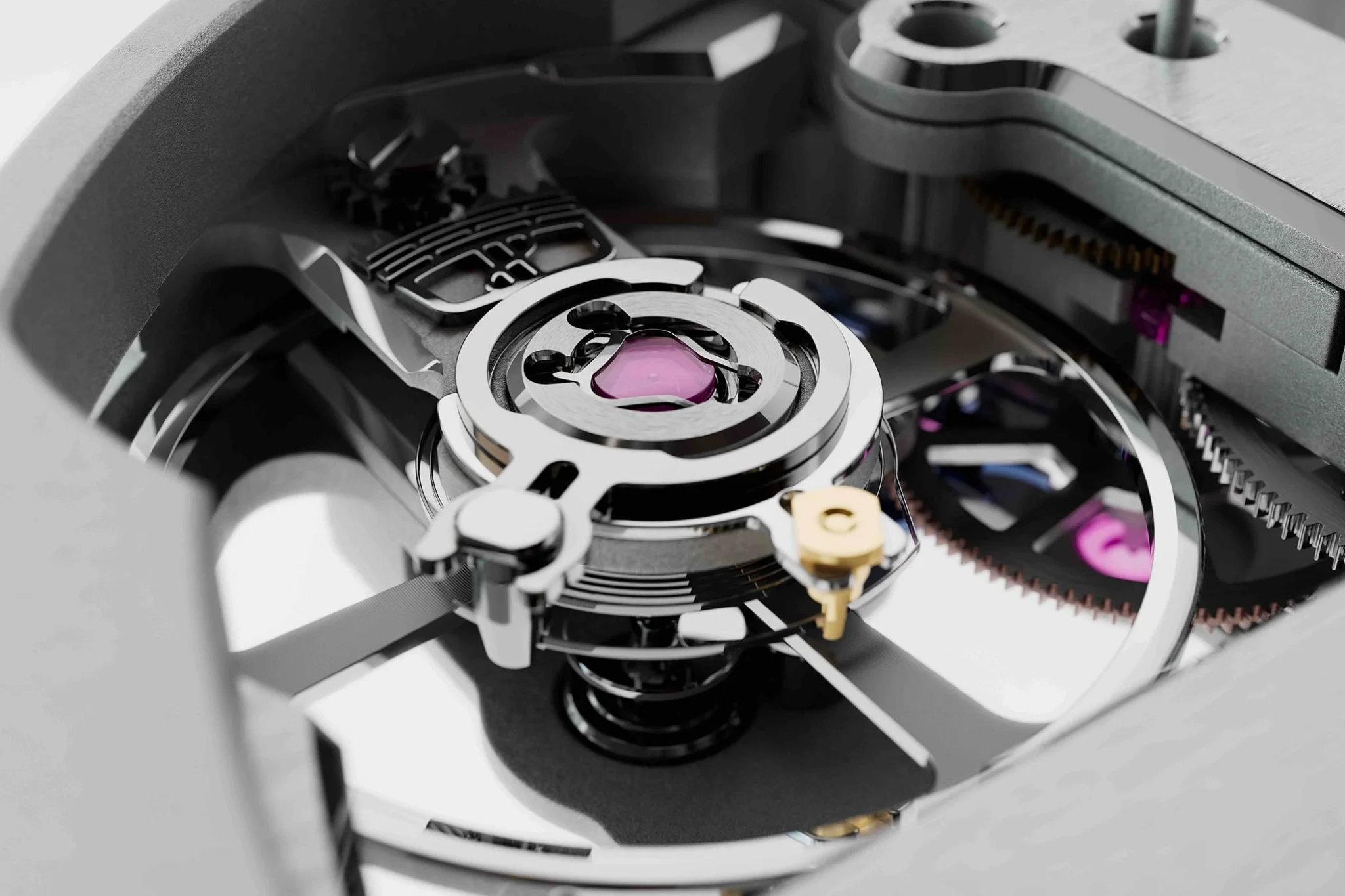
The fine-adjustment-mechanism has also been revised.
Beyond these functional refinements, Hublot has also reworked the aesthetics of the movement. The overall design moves away from its raw, industrial construction-kit look towards a still technical but more refined appearance.
Previously, the MECA-10’s movement decoration did not follow traditional watchmaking norms but instead embraced Hublot’s own high-tech, futuristic design language. The straight, horizontally arranged bridges on the caseback were bead-blasted, perforated, and devoid of decorative embellishments; a style that did not appeal to all watch enthusiasts, especially in a timepiece priced above €20,000. While this minimalist approach aligned with the disruptive philosophy of the Big Bang, Hublot has now introduced a more sophisticated aesthetic.
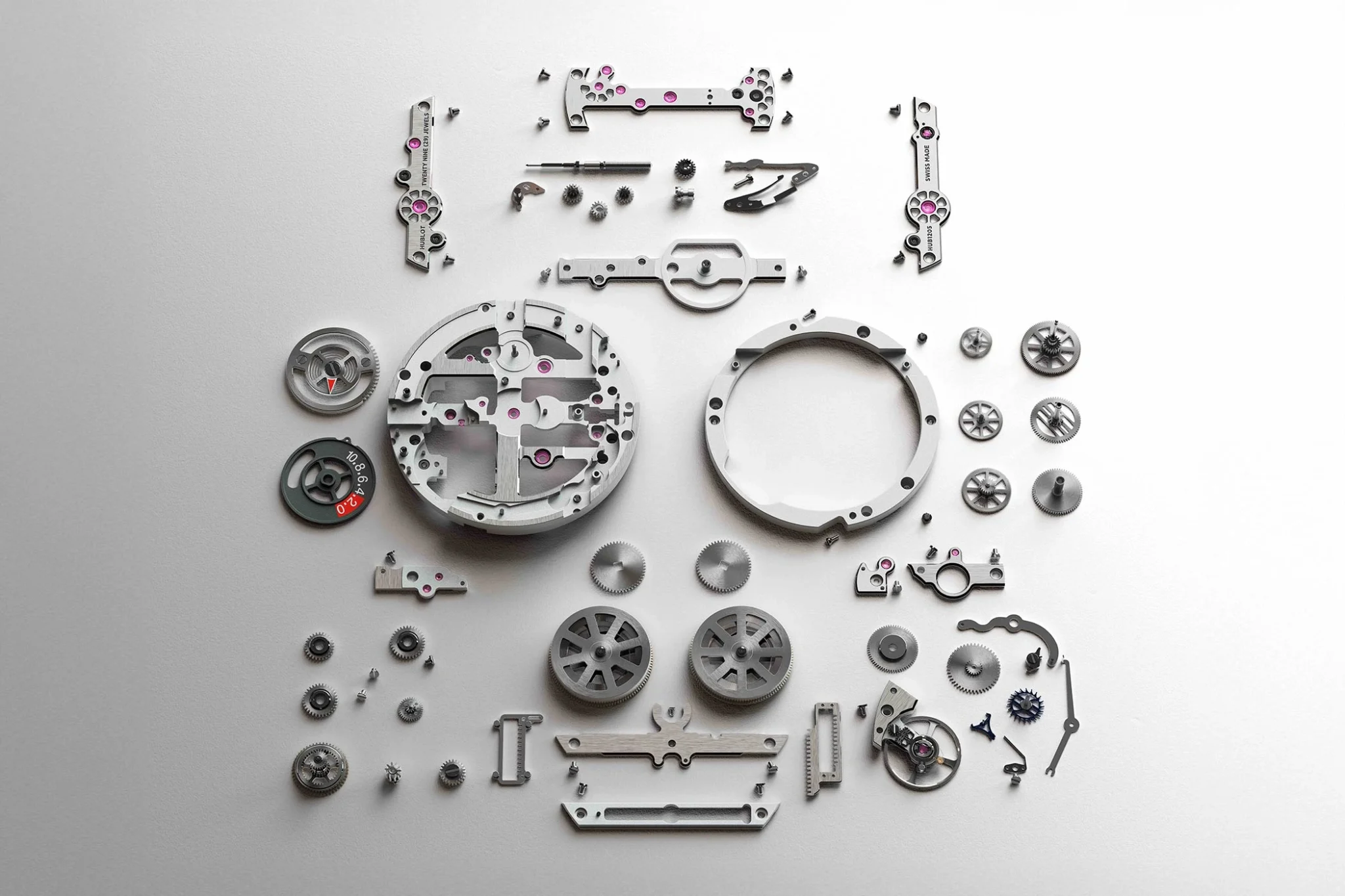
The numerous screw holes of the same size on the front and back are no longer required. The bridges have a striped finish, while their edges are bevelled and even polished by hand. There is also a new, recurring design motif for the skeletonisation: the wheels and overlying bridges are now perforated in an eight-spoke design. The characteristic stencilled numerals on the power reserve indicator and the minute track have also disappeared.
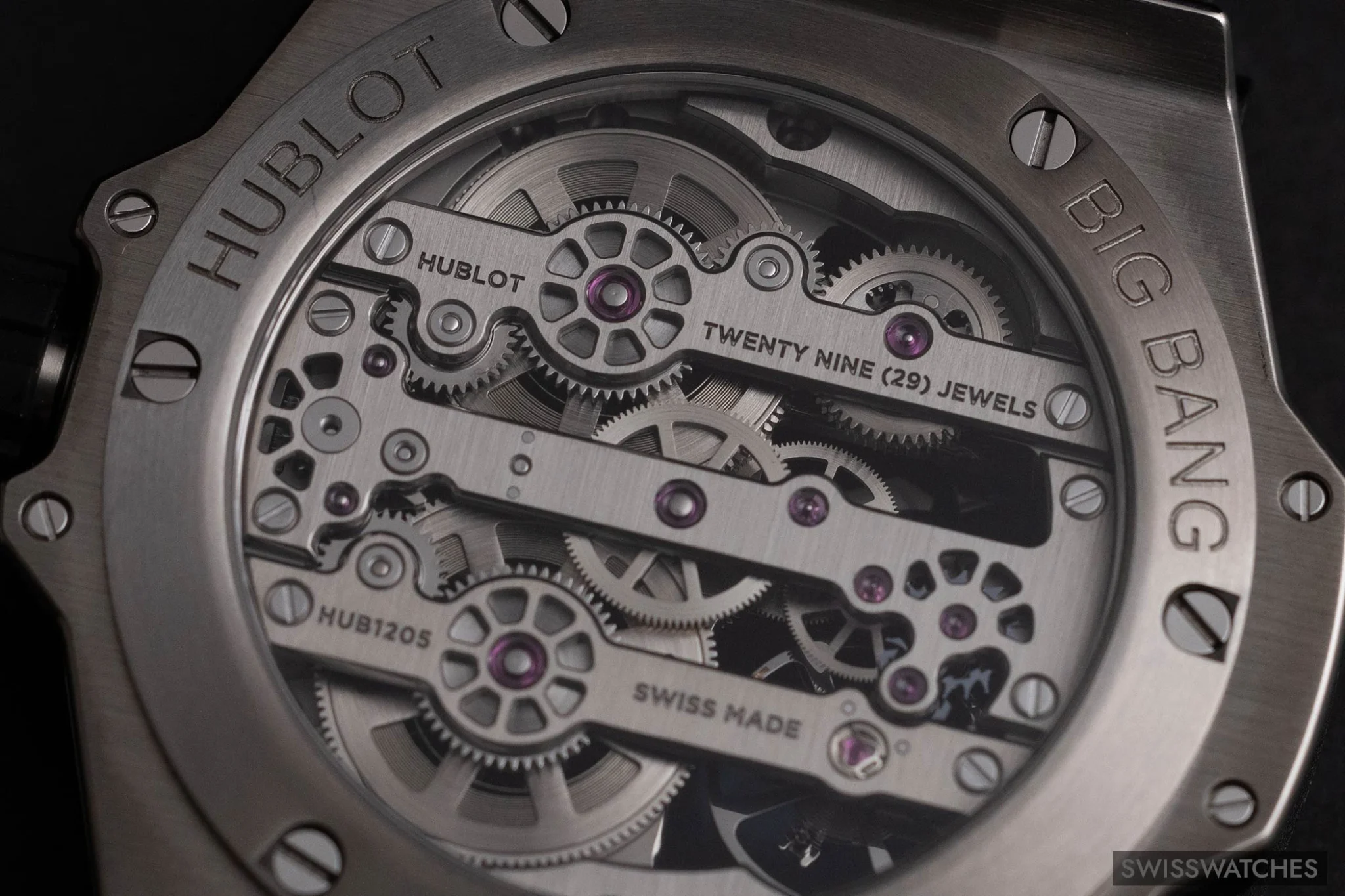
The case has also been reworked to complement these refinements. It is no longer bead-blasted but now features a vertically brushed finish with polished edges, further emphasising its intricate construction.
Although the new calibre remains 6.8 millimetres thick, thus matching its predecessor, Hublot has successfully managed to reduce the overall case height. At 13.9 mm, it is two mm thinner than the 45 mm model, ensuring that the well-balanced proportions are preserved even with the new 42 mm diameter.
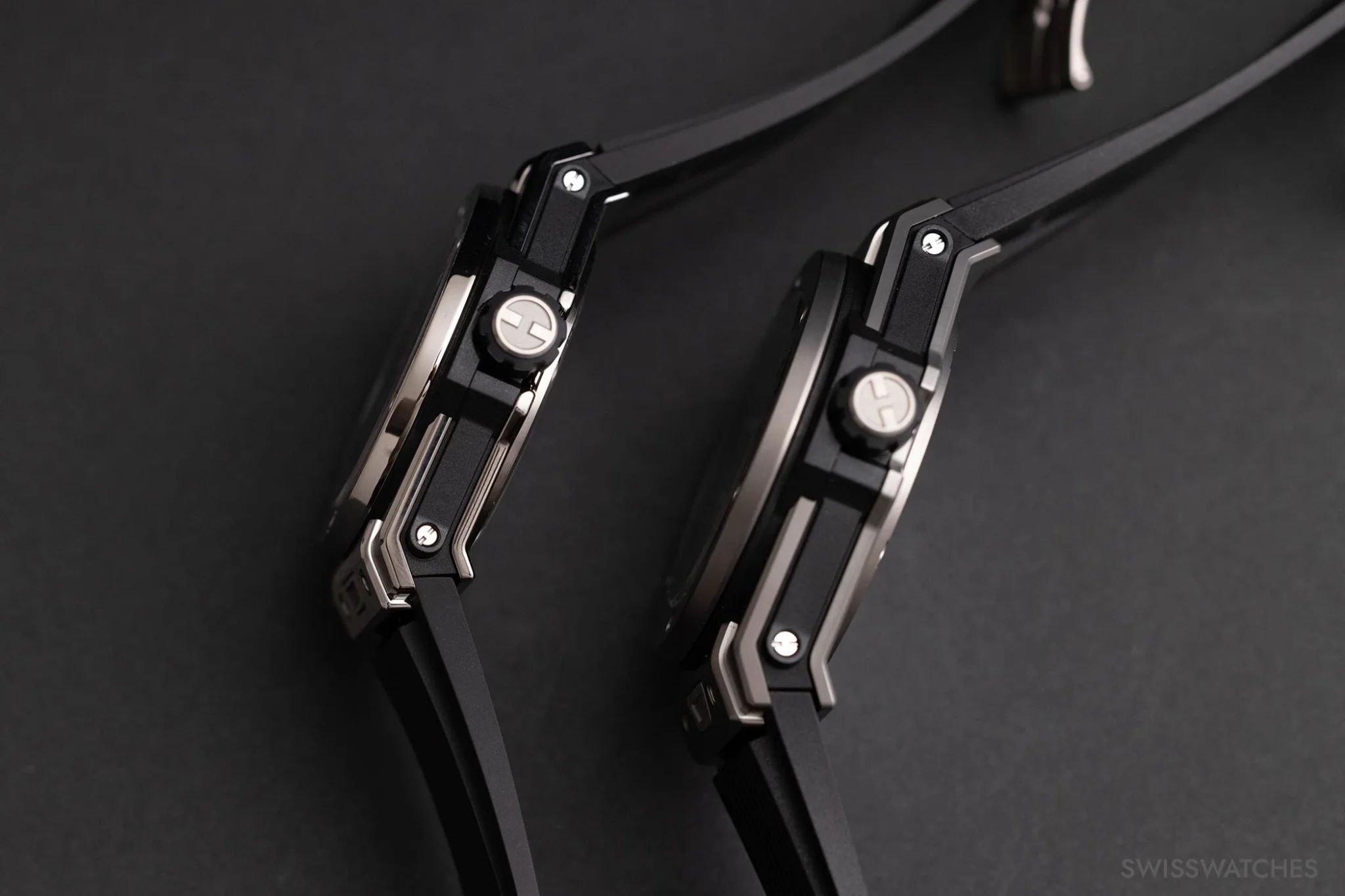
What remains the same?
In both sizes, the two open mainspring barrels, the gear train, as well as the anchor and escape wheel made from bluish shimmering silicon, remain visible beneath the bridges. The use of this material minimises friction, reduces wear, and requires very little lubrication. The slightly slower beat rate of 21,600 vibrations per hour, which enables the impressive ten-day power reserve, has also been retained.
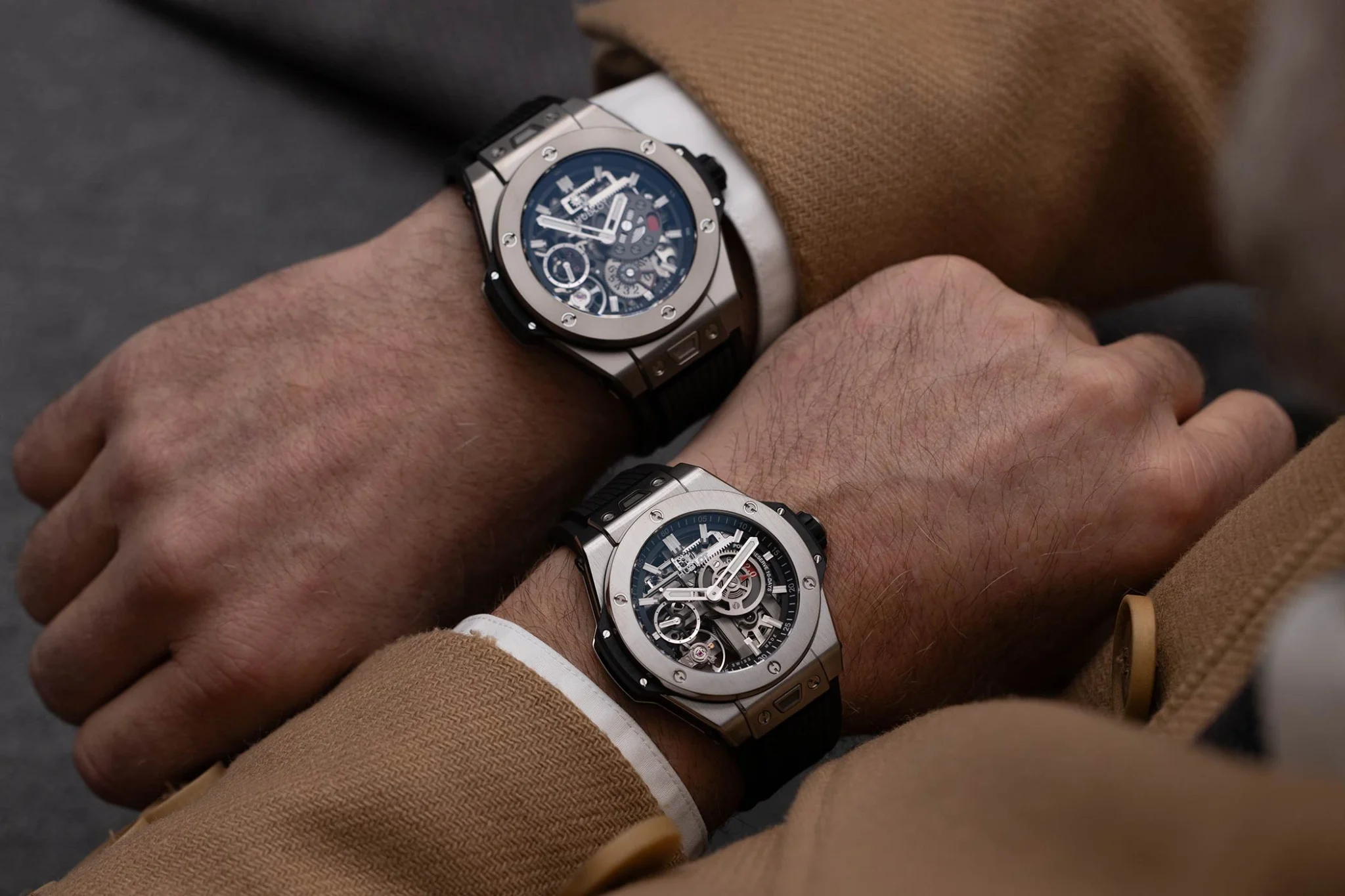
Likewise, the high-end aesthetics and futuristic design of the Big Bang MECA-10 remain unchanged, as they are closely tied to its technical complexity. The watch’s intricate overall appearance is largely thanks to its multi-layered case construction, featuring finely crafted screws, trapezoidal pushers for the strap’s quick-change system, and the modern skeletonised movement. At first glance, it is evident that the elaborate case architecture, with its numerous components, has been meticulously engineered and manufactured.
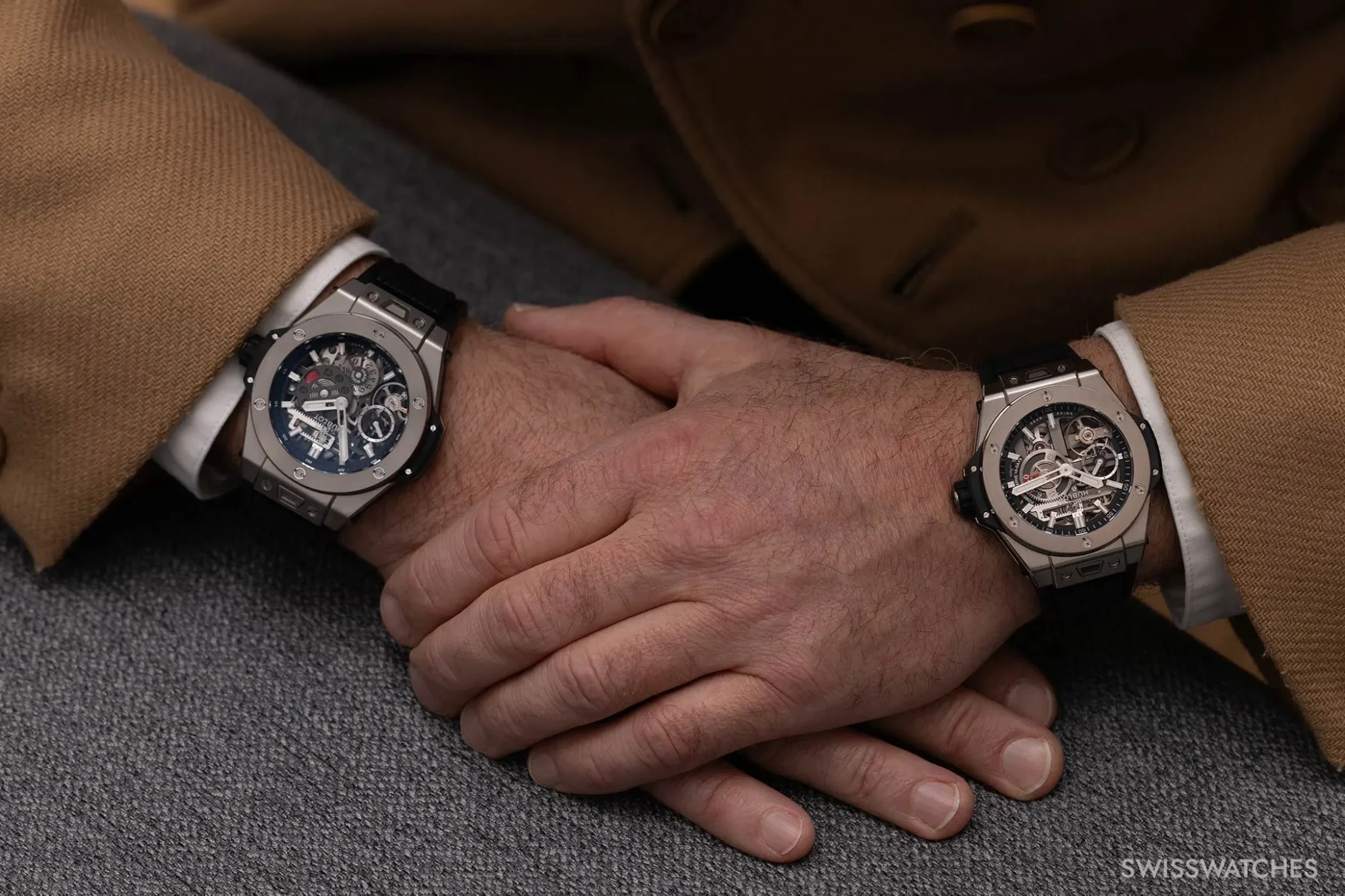
Hublot’s attention to detail is evident throughout the watch. The screws, for instance, feature a three-dimensional design: a polished ring rises above a matte surface, and together with the recesses for the tool, they form a stylised ‘H’. Even the buttons for the practical ‘One-Click’ quick-change strap system are carefully designed. The trapezoidal pushers are positioned between the two screws on the upper side of the lugs. Their raised edges are satin-finished, while the inner section is bead-blasted.
This meticulous level of detail extends across the entire case, which, when viewed from the side, appears to be constructed from five layers. Two matte black resin inserts separate the titanium sections. The crown, coated with rubber on its side, continues the case’s contrasting black and grey colour scheme.


The absence of a traditional dial presents certain challenges, but Hublot has addressed them with clever solutions. Since there is no surface for the brand’s logo, it has been printed onto the underside of the sapphire crystal. The large indices, which appear to float above the movement and enhance the watch’s three-dimensional aesthetic, are generously coated with luminous material and secured by a slim inner ring. Despite the open design, legibility remains excellent, thanks to the broad hands.
Models and prices
The new Big Bang MECA-10 42 mm is available in three versions: titanium, Frosted Carbon, and King Gold. To match the case, Hublot applies an elaborate galvanic treatment to the movement, colouring it accordingly. All variants are water-resistant to a depth of 100 metres, making them more than suitable for swimming.
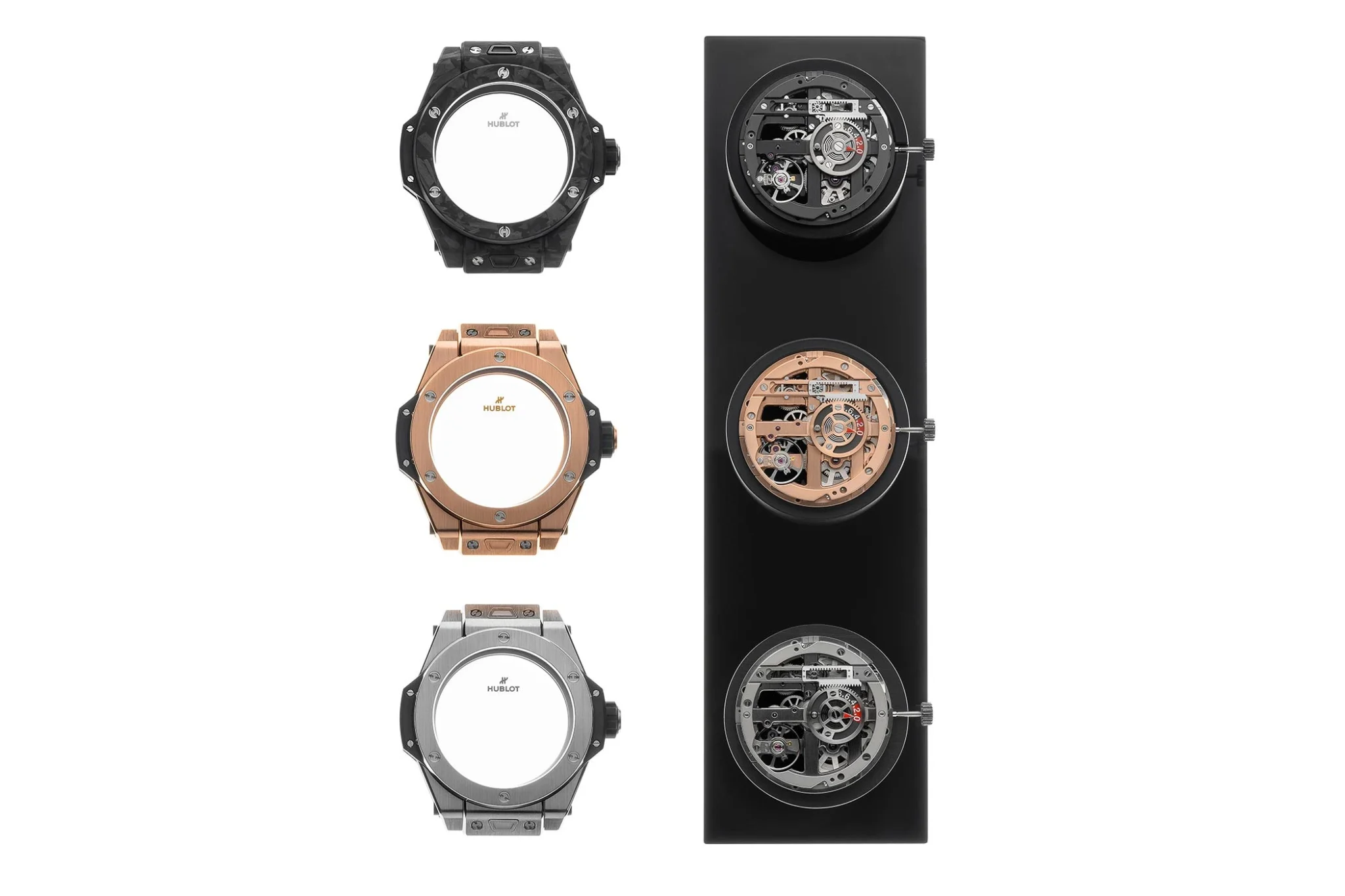
Hublot has only rarely used the material Frosted Carbon, also known as Forged Carbon. Unlike woven carbon fibre, this material is created by shredding the fibres into small fragments and then compressing them with epoxy resin in a mould under high pressure and temperature. The resulting case is more scratch-resistant and nearly as durable as titanium, yet weighs only a third as much.
A particularly striking feature is the black-grey pattern that emerges from the process, reminiscent of charcoal, making each watch unique. Hublot pairs the case with a lightweight black textile strap featuring a Velcro fastening.

The other two versions come fitted with Hublot’s signature rubber strap featuring longitudinal grooves, paired with a folding clasp that, like the case, has a complex construction with security pushers. The practical quick-change system, with its visible pushers, makes swapping straps effortless.
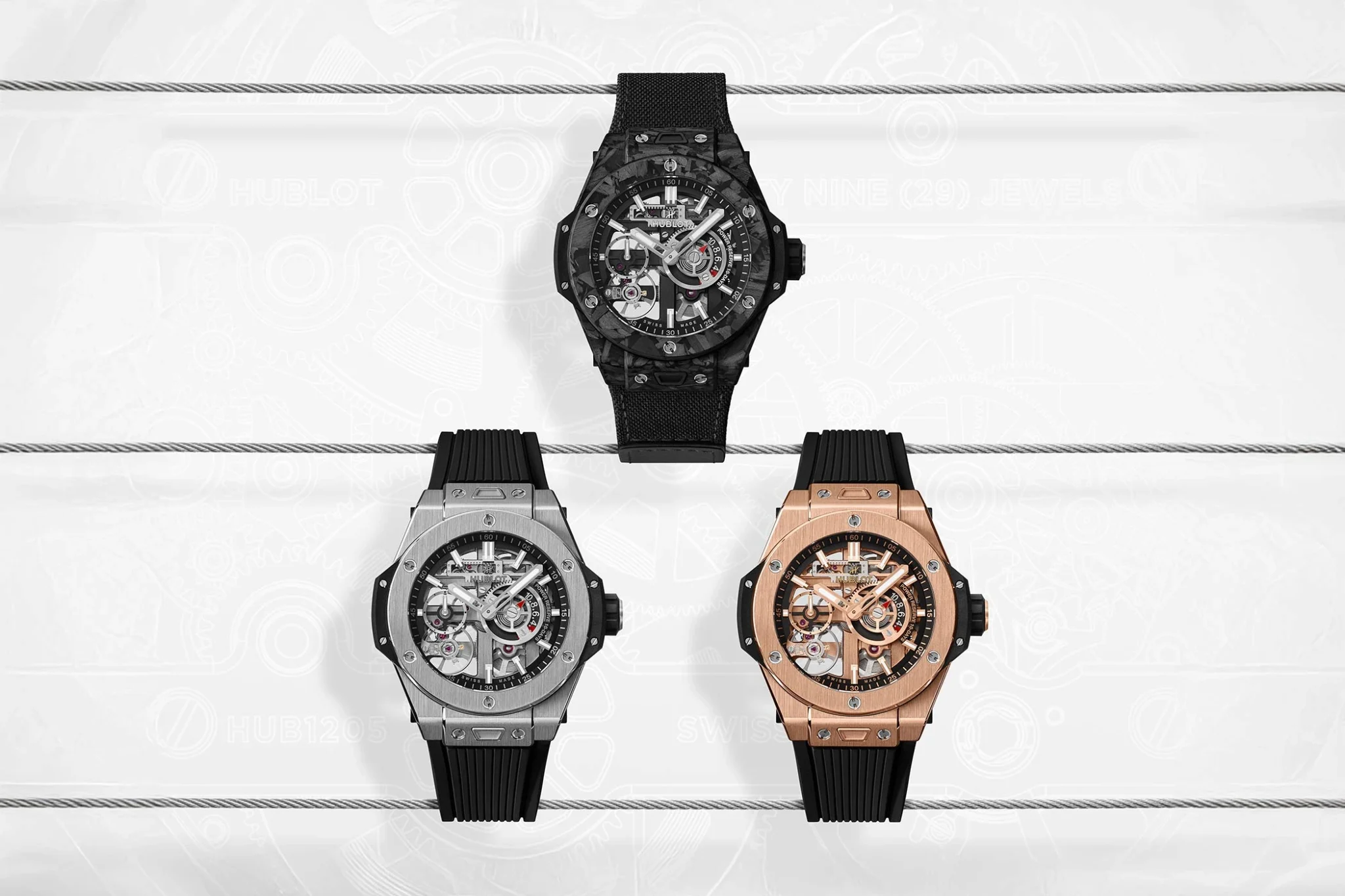
Encouragingly, despite the more elaborate movement finishing, the new MECA-10 in titanium remains priced at €23,900, the same as its predecessor. The King Gold version is even more affordable at €44,500. Meanwhile, the Big Bang MECA-10 42 mm in Frosted Carbon is priced at €28,500.
Final Thoughts
Twenty years after the debut of the first Big Bang and eight years after the launch of the striking MECA-10, Hublot introduces a refined 42 mm version with several updates and aesthetic enhancements. The addition of a hacking seconds mechanism and a new fine adjustment system improves the movement’s functionality. However, the power reserve display, now reduced to a single indicator, adopts a slightly more conventional approach. The refined movement finishing, featuring angled and polished edges, lends the watch a more sophisticated appearance.
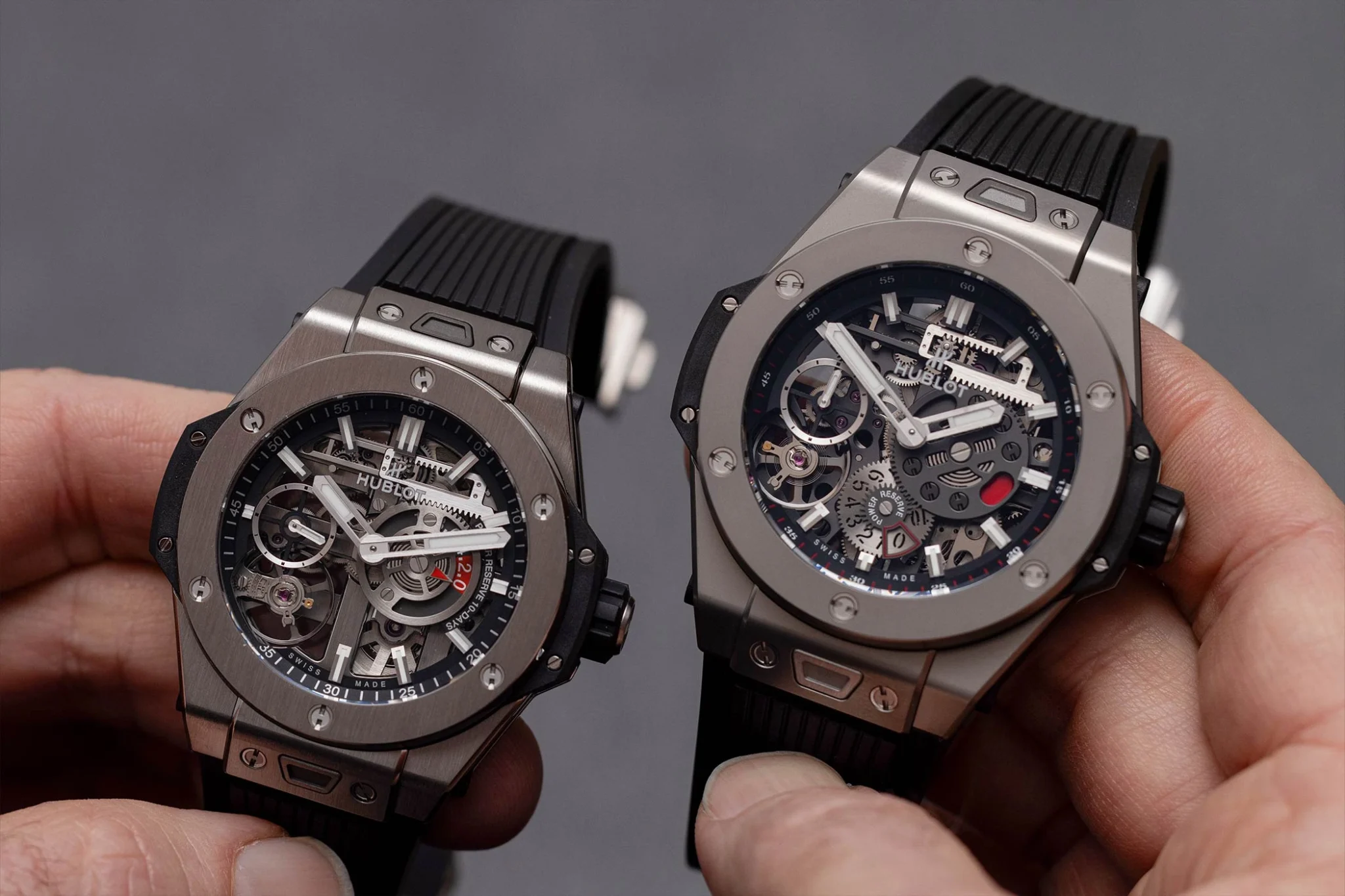
What remains unchanged is the fascinating movement architecture, which allows for an exceptionally open design while offering visual intrigue through its exposed balance wheel and unconventional rack mechanism. Complementing this is the new Frosted Carbon case, with its unique textured surface. Moreover, the complex Big Bang case, with its intricately crafted details, continues to be one of the watch’s standout features.
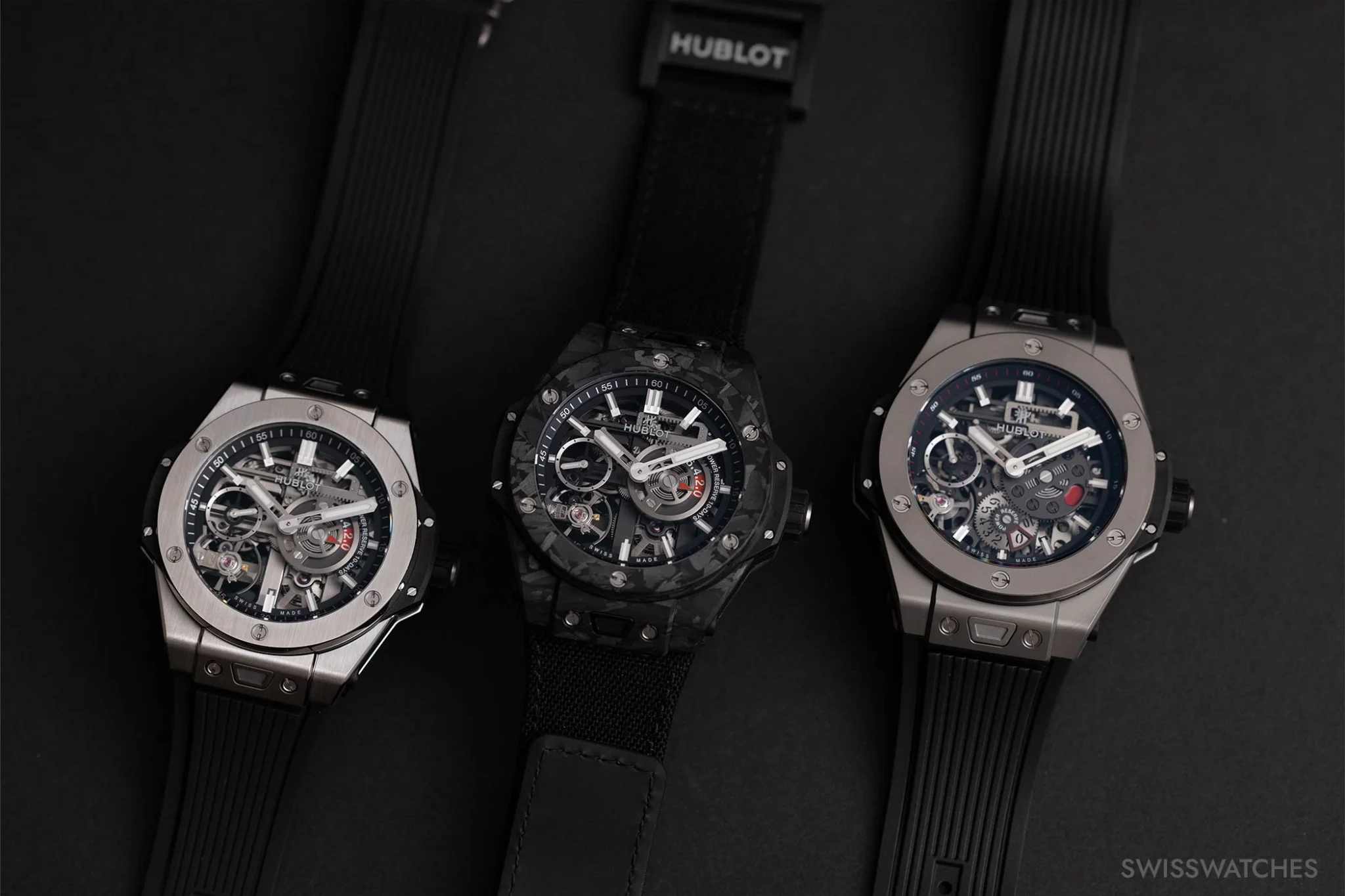
For those who prefer the older, more industrial construction-kit aesthetic of the movement, with its distinctive perforations, and who are comfortable with a larger case, the Big Bang MECA-10 in 45 millimetres remains available – it continues to be produced.
